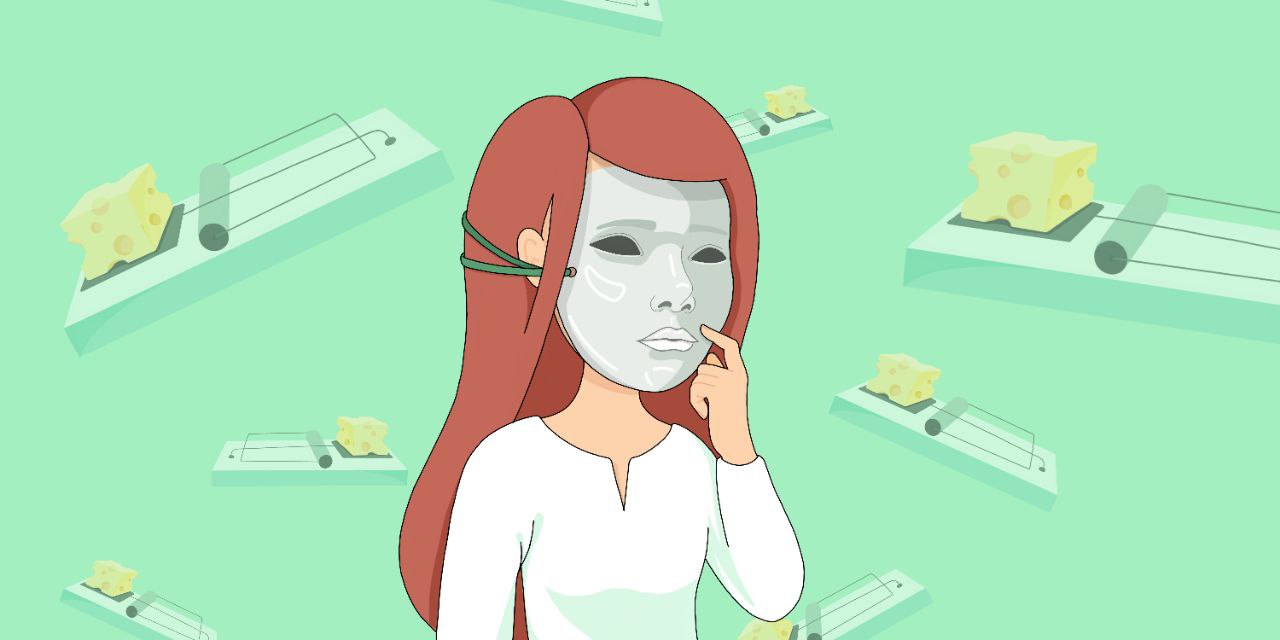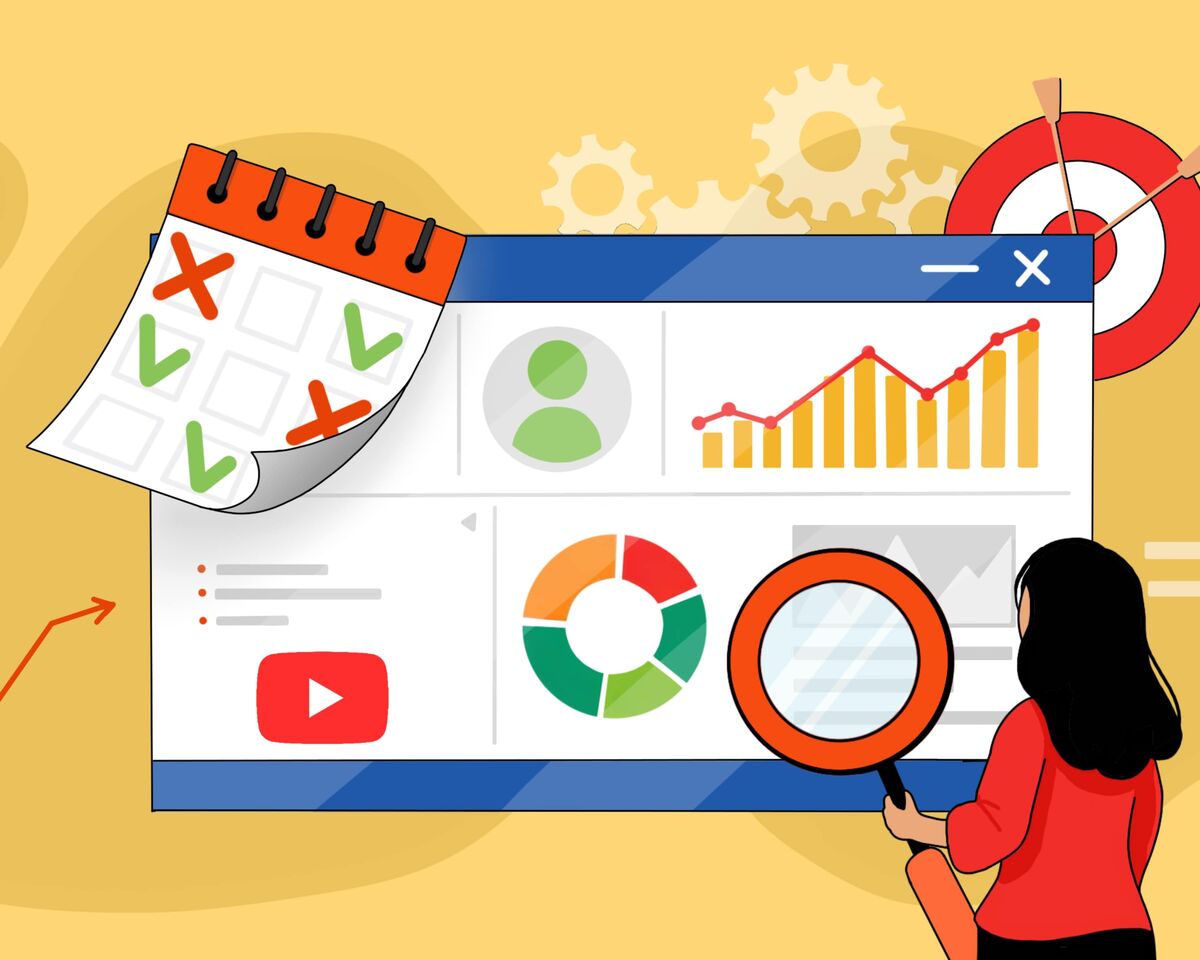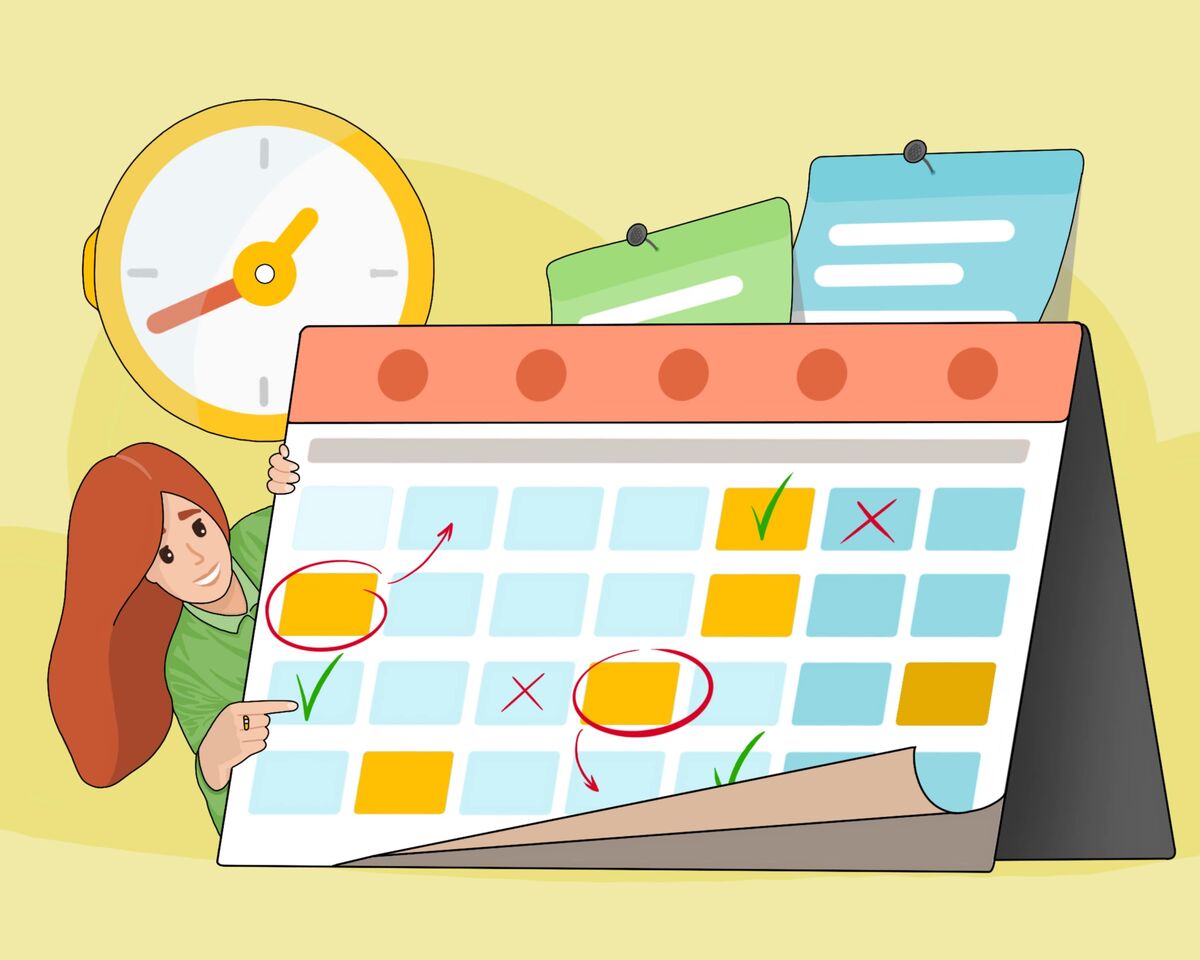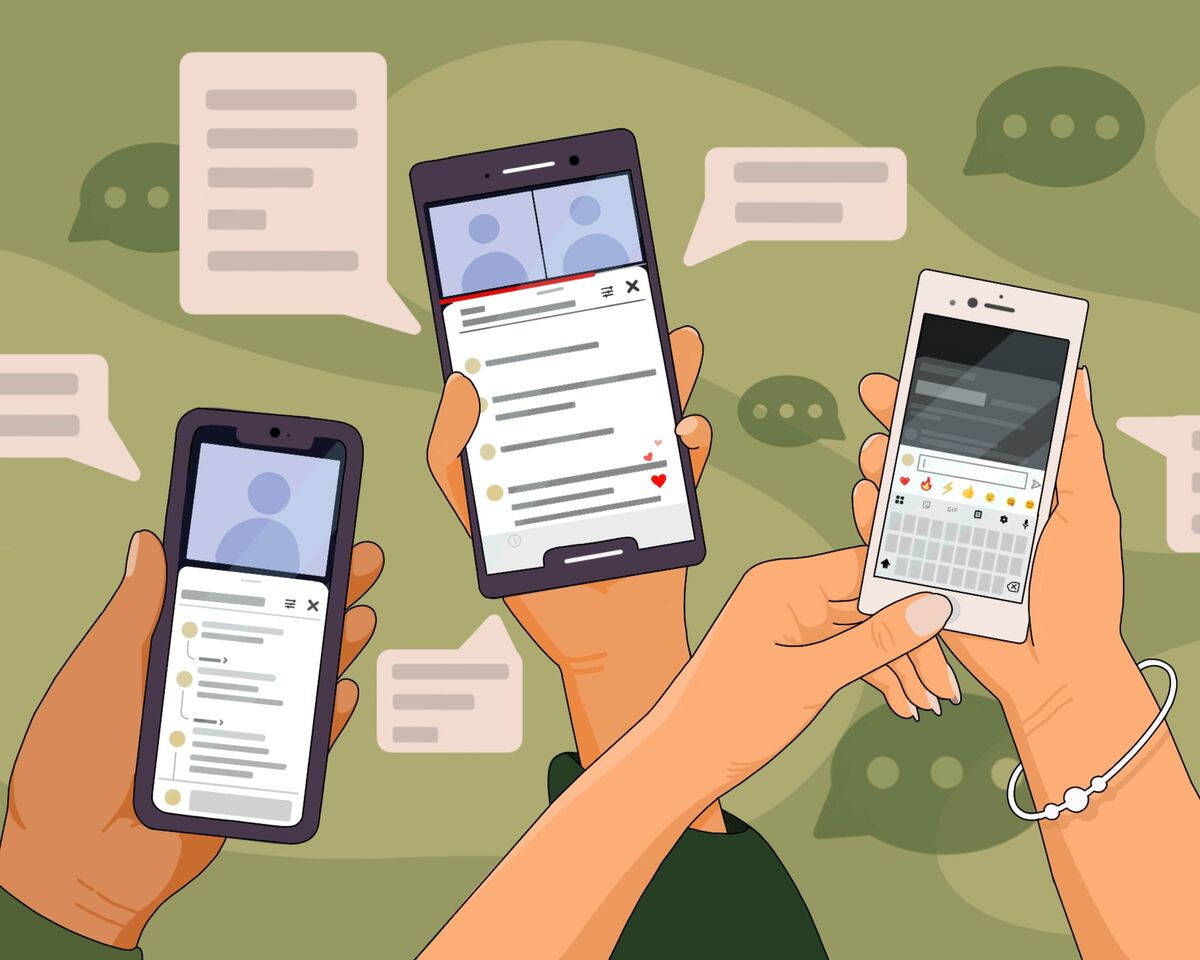Faceless Videos: How to Use Others' Content Without Violating Copyrights

At first glance, it may seem that running a faceless YouTube channel is very simple. In addition, many YouTubers continue to talk about how easy it is to promote faceless videos and how easy it is to profit from them.
This all sounds great, but we shouldn't forget about the rules about creating content to upload on YouTube. There are various ways to run faceless channels and some of them are illegal. Our task is to delve into the subject so that you understand exactly which path of development for your channel will be safe.
Faceless content on YouTube
Faceless videos or entire channels on YouTube are those in which the creator does not show their face, thus concealing their identity.
- Faceless channels with their own video content.
Typically, this includes educational content, capturing beautiful scenery, including slow-living content, filming the process of creating something, such as master classes on any topic.
- Channels with original voice-over text and borrowed stock footage
In this case, the creator writes an original script, creates a voiceover, and then overlays stock footage from the internet, movies, TV shows, cartoons, news, photos, stock videos, etc.
Examples of this content may include meditation channels, where you listen to someone's voice, while the video footage may simply be a static image or a continuously burning candle.
- Videos that are created from fragments of other people's videos, without any voice acting or original creative attributes.
Here we can include compilations of funny animal videos, car accident compilations, and similar content.
Faceless channels in various niches can be appealing to wide-ranging audiences. We can all freely observe their growth and popularity. Therefore, there is a feeling that you can take other people's videos, remix them, and gather millions of views, and perhaps even millions of dollars.
Subsequently, it may begin to seem that faceless channels are something very easy, requiring little time and effort, something that anyone can create, and you don't need to learn how to appear on camera or take courses in public speaking.
As well, facelessness expands your audience, presenting creators with the chance to reach an international YouTube audience. This especially applies to videos with completely repurposed content without original narration. With proper channel management, faceless content can indeed lead you to an international audience.
But there are a few things about managing these channels, that in reality, make anonymous channels a dead end for some creators:
- Owners of faceless channels constantly receive Content ID claims and strikes for copyright infringement.
- Quite often, these channels are denied monetization altogether.
- If monetization is enabled, it is likely to be severely limited.
- There may be difficulties with promoting faceless videos, as YouTube may doubt the originality of the content and classify it as disputed content. In other words, the videos will not be removed, but YouTube may not provide much visibility to them.
The years when stolen and re-edited videos could easily elevate creators to stardom are already in the past because the main rule of YouTube when distributing monetization to creators is that the content must be original.
Original content is considered materials, text, images, videos, anything created by a person based on their own knowledge or acquired experience. As you can probably understand, re-edited content from others has nothing in common with original content.
So what should a faceless channel creator really prepare for? What misconceptions do they often encounter?
Misconception #1: Creators believe that there is content in the world that is not protected by copyright.
When we open YouTube's rules or read an article about copyright, it may seem extremely confusing. Some materials are indeed protected by copyright, and yet there is other content that is free to use. So why doesn't anyone say that almost everything we encounter in the digital world is content protected by copyright? Marketers also spice up things by using music and videos without copyright. Although in reality, they are talking about a license with free use, which we will also discuss below.
There is so much information on copyright law that creators simply don't know where to start. The word "law" in the name creates a very serious tone to ownership. This creates the feeling that copyright needs to be confirmed, registered somewhere, interacted with specialists, possibly even hiring lawyers.
All this leads to the fact that some creators actively avoid copyrighted content because they do not understand how to utilize it. There are those creators who may use copyrighted material and receive strikes. Then there are those few who have figured out the topic and know exactly what to do.
In fact, ownership exists in everything and everywhere: in a picture, a phrase, a track, a video, animation, sound. There are very few works that do not have copyright. Those select few works belong to the public domain of each specific country.
YouTube is an American corporation that is governed by U.S. law.
On January 1 of each year, another batch of formerly copyrighted works enters the public domain in the United States. This is because a copyright expires after 96 years from the date of publication. Therefore, in 2024, books, films, audio recordings, and many other works published in 1928 became part of the public domain.
Also considered part of the public domain in the United States is everything created by employees of Congress, the White House, and other federal agencies in the course of their official duties. This includes photos taken by NASA, certain court decisions, and census data.
YouTube also warns us that copyright does not protect individual parts and stages of creativity, such as ideas, facts, processes, headlines, and titles.
But remember: if you completely copy someone else's channel, its style, videos, branding, etc, this may be considered fraud and duplicate content.
Misconception #2: Creators believe that obtaining permission to use other people's content is difficult and will surely cost money.
If almost all materials on YouTube are protected by copyright, how can they be used, and is it possible at all?
First, it is important to remember: copyright is a way to protect intellectual property. But this does not mean that someone will deliberately fence off their work from other creators. This will not help owners develop their creativity.
For example, let's say you are a beginner musician who writes tracks. All your musical works are protected by copyright simply because you are their creator. There is no need to confirm copyright for your own music or register anything. This is only necessary if you want to distribute your work under certain conditions. A license serves as an agreement between the original content creator and those who want to use it.
In the world of copyright, a license is very similar to a lease agreement for an apartment. As the owner, you give permission for others to use your property, but under your conditions. Musicians can choose the type of license that suits their goals and conditions.
Therefore, it is important to understand that a license is a condition of cooperation between two parties, not an obstacle. If you want high-quality and popular music, you probably need to purchase a license from a stock music website. The situation is the same with video content.
However, sometimes it can be difficult to determine if a material has a license or not. In these cases, you can try to contact the creator directly. This may seem inconvenient, but at least you won't miss the opportunity and will be able to show respect for their work.
Misconception #3: Creators think that if other users use someone else's materials, it means they can do the same.
The world of YouTube is open to all users, allowing creators to observe each other's development. When we see countless channels with compilations of clips, funny moments, or streams from other creators, it may seem like anything goes on YouTube. How else can we explain the fact that these channels are not banned?
This topic is delicate, and we cannot say for sure how infringing channels continue to exist because we do not work with these channels personally or sit in their creative studios. However, there are several hypotheses.
First, we have no idea what specific license the videos or music in another creator's video have. If a channel is thriving, there is a good chance that the creator either purchases licenses or shares revenue with the original content creator. Some materials may even be distributed under a free license, which is not prohibited.
Second, we don't know how many lawyers are working to ensure the channel's continued existence. Appeals and copyright issues are typically handled in court.
Third, the creator may have personal agreements with other creators. In general, there's nothing stopping you from collaborating in a mutually beneficial way.
Fourth, we don't know how many channels by copyright infringing creators have been banned by YouTube. Many people can recall a couple of similar channels that keep re-uploading content until their channel gets blocked by YouTube. This is definitely not the right approach. YouTube has a good data retention system, and it could end not only with the channel being blocked but also with your AdSense account being suspended.
Finally, we don't know for sure if these creators who repurpose content without appropriate licenses are monetized and how many complaints they receive on their videos. These types of channels can still thrive, and their videos can garner views. Complaints about copyright infringement and Content ID claims do not affect video promotion, but they do affect monetization.
Misconception #4: Creators believe that YouTube resolves copyright issues.
It is important to understand that YouTube does not create copyright laws. Nor does it enforce them; this responsibility falls on each individual country.
Everything YouTube writes about copyright in its help and rules is based on US legislation. We can learn a lot from these rules, and we are obliged to adhere to them to legitimately operate on the platform.
However, in addition to this, it is necessary to know the copyright laws of the country in which you work and generate income. Because in the event of a dispute over copyright infringement, it will not be resolved through YouTube, but through the courts of that country.
YouTube can only notify the creator that their content is being used illegally or warn the channel owner that they have violated the rules.
Of course, the video hosting service will impose sanctions on the violator because US law, under which it operates, requires it to do so. Further disputes between the creator of the original content and the YouTuber who illegally appropriated it will be resolved in court.
To protect yourself as much as possible, you can learn from the experiences of other users and understand what YouTube specialists think about this issue by reading questions in the YouTube help community.
However, YouTube will not help you determine ownership of the original work. For this reason you should find a legal license to avoid copyright infringement, or resolve disputes regarding copyright in any other way. You must do all of this yourself; it is your responsibility as a content creator.
Misconception #5: Creators believe that by following the principles of fair use, they can use someone else's content with no issues.
Fair use, or "fair dealing," is a legal concept that allows you to use copyrighted materials in certain cases without seeking permission from the copyright holder or paying royalties.
The whole principle of fair use is based on the fact that you are not taking someone else's material for direct copying, but for creative, critical, or scientific transformation.
In fact, it's a kind of lifeline for creators, allowing them to take others' content, transform it, and publish it on their channels without issues.
For this to work, you need to follow 4 principles:
- Nature of use
It's important how much you have transformed the original materials and how critically you have analyzed the content. Simply commenting on another video is unlikely to be considered fair use.
The value you add to the video should outweigh the original material. You need to demonstrate the work you have done and how significantly you have altered the original content.
- Source and type of content borrowed
It's also crucial what kind of content you are taking and, more specifically, from whom.
Taking materials from a large corporation will likely land you in a heap of trouble. Major brands, TV networks, advertising campaigns, and any official sports broadcasts have entire departments dedicated to copyright law.
So, taking protected content is very risky. In these cases, you risk being sued for copyright infringement. And knowing how seriously these companies protect their interests, you're almost guaranteed to lose in court.
If you need, for example, a clip from a Formula 1 race broadcast, it's better to use a fragment from a fan recording rather than an episode from the official broadcast, for your own safety.
- Size and significance of other people's content
Non-original material should not constitute the majority of your work. If you've borrowed a small fragment but it carries the main message, and your own material is only supplementary, the video would not qualify under the fair use principle.
- The impact of your content on the original creator
If you have created a video based on someone else's content, and as a result, viewers prefer watching your release, ignoring the original, this is considered to have a negative impact on the original creator's profits. And this is prohibited by the principles of fair use.
However, if you use content for personal purposes and do not seek monetary gain, there should be no difficulties. Of course, only if you have taken into account all four rules we discussed earlier.
In any case, we advise you to think carefully before adhering to the principles of fair use. This is a very complex legal concept that definitely requires a careful and balanced approach.
Misconception #6: Creators think that faceless content is an easy and safe way to make money on YouTube.
The misconception that faceless content is an easy and safe way to make money on YouTube is quite common. Many of us have at least once contemplated how much simpler and safer it could be to run a faceless channel.
By not revealing your identity to the public, you avoid attracting haters who recognize you, and you don't need to worry about mastering being on camera. The anonymity itself isn't something terrible on YouTube. Faceless channels can cover various topics: from do-it-yourself videos, instructional masterclasses on any subject, audiobook channels, ASMR content, to gameplay walkthroughs where the creator doesn't show themselves - the possibilities are endless.
Typically, YouTube doesn't have many issues with anonymous channels because the content itself is original. However, there's another category of faceless content that has earned a bad reputation. These are channels that compile clips from other videos, music mix videos, and various appropriations of repurposed materials in large quantities.
There's a prevailing belief that creating faceless content is very easy and that earning money from it is equally simple, almost like a shortcut to fame and wealth. However, in reality, things turn out to be quite different. An anonymous channel usually carries a significant risk. Creators of faceless content must be prepared to demonstrate the originality of their materials or provide licenses.
You may also see those content creators who resort to tricks: taking many small fragments of videos from different sources, adding their materials, comments, and some proprietary processing. These creators search for materials under free licenses, transform them, and process them. This is a very precarious scheme, especially if you don't have licenses for every borrowed fragment of video and music. The Content ID system will find matching material and notify the copyright holder of the original content about your illegal borrowing. At the very least, this can deprive you of monetization. If the owner insists on principle, they will request the removal of the video, which is equivalent to receiving a strike.
So before creating a faceless channel, think again about the risks. As mentioned earlier, we cannot know how much effort and connections have been put into keeping anonymous channels from being shut down. In addition, let's not forget that there's always a chance that the creator purchased licenses for borrowed materials or finds content with a free license.
As you can see, if you follow all the rules and do not focus on a quick and easy rise to popularity. But instead if you focus on quality, faceless content can become the strongest advantage over competitors. Now that you understand what difficulties a seemingly simple format hides for creators, you won't be easily frightened by the legal intricacies and licenses. Any unexpected strikes or complaints will be less of a concern for you altogether.
Good luck!




